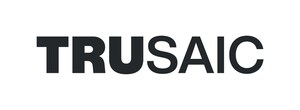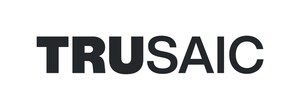New Research Suggests Visible Support from the C-Suite, Better Data Practices Key to Increasing Diversity, Equity, and Inclusion
Trusaic-Sponsored Survey Identifies How "Leaders" and "Laggards" Approach DEI
LOS ANGELES, Sept. 21, 2021 /PRNewswire/ -- Growing social and political pressure, expanding pay data laws, and a global pandemic that is inflicting disproportionate economic damage on women and people of color are compelling organizations to confront workplace disparity; though new research indicates progress around this complex issue is largely inconsistent and insufficient. A new study from Harvard Business Review Analytic Services and SHRM-the Society for Human Resource Management in association with Trusaic examines the actions businesses are taking to improve diversity, equity, and inclusion (DEI); how successful they are; and where critical gaps stand in the way of meaningful change. The research suggests two key factors are driving forward progress: commitment from the executive ranks and a commitment to better data.
The survey identifies respondents as "leaders," "followers," or "laggards" based on how they rated their organizations on DEI progress. Download the survey report here (https://bit.ly/3AmiYHa).
The numbers underscore that good intentions are not enough. While a majority of survey respondents (65%) say DEI is a high strategic priority, two thirds (67%) admit their organization is, at best, only somewhat successful in creating a diverse, equitable and inclusive workplace. Even among leader organizations, almost half acknowledge they are behind where they should be in improving DEI. Most laggard organizations report DEI initiatives are more "style over substance."
The findings reveal that momentum for change must begin in the C-suite:
- Half of laggard organizations say they are frustrated by a lack of commitment from leadership, and 72% say they are held back by a lack of diversity at senior levels of the organization.
- 77% of leader organizations have visible executive support compared to just 34% of laggards.
- When the CEO sets the strategy and frequently communicates progress, the company is 6.3 times more likely to have a diverse leadership team and to be a leader in its industry segment.
- DEI leaders are significantly more likely than followers or laggards to set goals for levels of diversity among senior executives and board members.
Measuring and tracking DEI metrics are essential to accelerating DEI progress. Leader organizations regularly monitor DEI metrics, communicate progress to key stakeholders, and use data to identify interventions and course-correct:
- Leaders (70%) are more than twice as likely as laggards (30%) to track all three aspects of diversity, equity, and inclusion. Leaders also measure progress across a wider range of metrics.
- Recruiting and hiring are the most tracked diversity metrics. Leaders track both areas much more than laggards.
- Leaders work far harder to determine whether their staff are treated equitably and are significantly more likely to track equity in compensation, performance development and feedback, promotions, and access to growth opportunities.
- A third of laggard companies that track diversity do not track equity.
- 95% of DEI leaders measure inclusion goal progress at least annually; 51% track inclusion goal progress at least quarterly – more than twice as often as laggards.
- More than twice as many leaders have seen inclusion sentiment improvement in the past two years.
"Organizations that commit to correcting imbalances in the workplace are often met with significant challenges. What's missing is the critical connection point between monitoring DEI metrics and using that data to improve the effectiveness of DEI programs to create lasting, meaningful change," says Robert Sheen, CEO of Trusaic. "Data supports firms in holding themselves to account. Access to timely and reliable data is key to DEI success."
As a direct result of their DEI efforts, surveyed leaders reported greater improvements in team diversity, employee engagement, collaboration, pay equity, and the ability to recruit top talent.
A total of 1,115 respondents drawn from SHRM membership and the Harvard Business Review audience completed the survey.
About Trusaic
Trusaic (https://trusaic.com/) is a software company that helps organizations reduce their risks, maximize opportunities, and keep up with rapidly changing regulatory requirements. Trusaic's pay equity, diversity, and inclusion solutions combine advanced data analytics with human expertise to ensure comprehensive, customized support. Trusaic helps build better workplaces, so companies can build better businesses.
Media Contact:
Jackie Jusko
216-374-0945
[email protected]
SOURCE Trusaic

WANT YOUR COMPANY'S NEWS FEATURED ON PRNEWSWIRE.COM?
Newsrooms &
Influencers
Digital Media
Outlets
Journalists
Opted In





Share this article